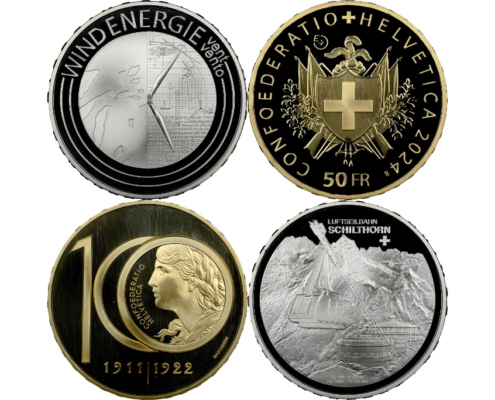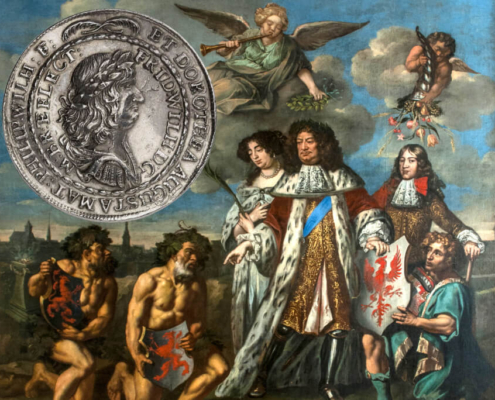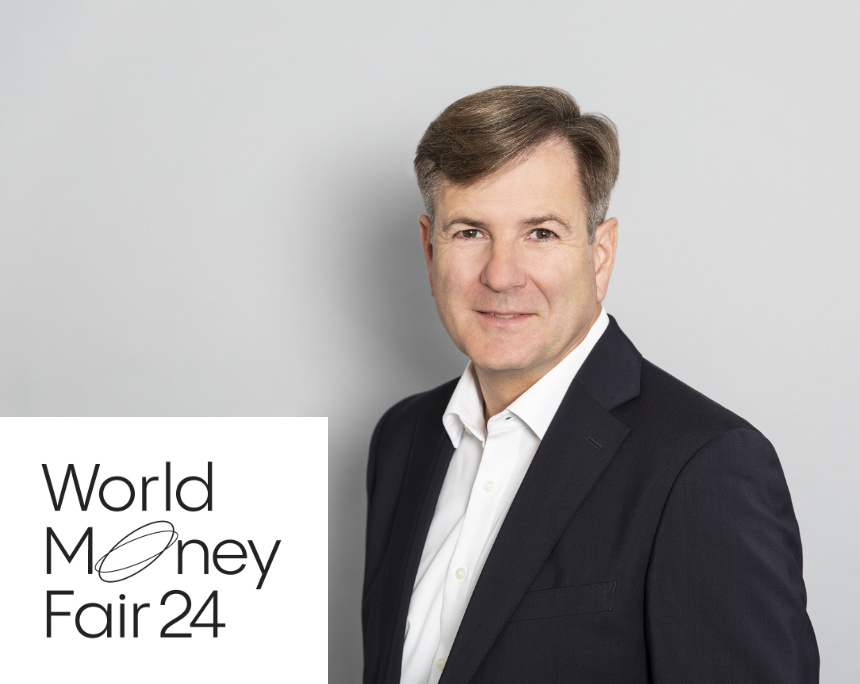1/2 Reichstaler 1621,
under Wilhelm V of Hesse-Kassel as administrator.
Condition: ef+


city of Besançon,
3 Pistols 1666 with title Charles V.
Condition: CH UNC

Bavaria, Chaise d'or (imperial shield)
1328-1347 under Emperor Louis IV.
Condition: ef

Reichstaler 1654-1668
under Count Guidobald von Thun.
Condition: vf-ef

Solidus (491-518)
under Anastasius the righteous.
Condition: vf-ef

Archive: People and Markets
Meeting of the Oriental Numismatic Society 2024 in Tübingen
The annual international conference on Islamic numismatics will take place in Tübingen from May 4 to 5, 2024. The program tempts you to spend the first weekend in May in beautiful Tübingen!
Interview: News From the World Money Fair
In 2024, a new generation takes over the leadership of the World Money Fair. Having hosted 17 successful events, Barbara Balz has handed over the reins to Goetz-Ulf Jungmichel. We talked to him to find out about the future course of the World Money Fair.
Archive: Coins, Medals and more

Swissmint Patterns at Numismatica Genevensis SA
Numismatica Genevensis will offer Swissmint patterns at auction on 9 and 10 December 2024. Some of these patterns belong to a commemorative coin that will not even be released until 2025. All of these patterns are true rarities – ranging from unique to a maximum of four pieces in existence!

The Great Elector, Taxes and the Rise of Prussia
On 1 February 2024, the Künker auction house will hold its 400th auction sale. Among the 770 lots are very rare issues from the reign of Frederick William of Brandenburg-Prussia. They bear witness to the achievements of the Great Elector, who brought prosperity to a realm devastated by the Thirty Years’ War.















Report of the ICOMON 29th Annual Conference in Kuala Lumpur
The 2023 ICOMON conference was held in Malaysia. Read here about the program, the topics presented and discussed, and where you can watch the presentations online.
The UK’s Highest Value Treasure Find Ever Discovered
All a group of friends really wanted to do was enjoy a relaxing weekend away and try out a new metal detector. The unexpected result of this trip is the highest value treasure find ever discovered in Great Britain. The coins will soon be on display at the British Museum.